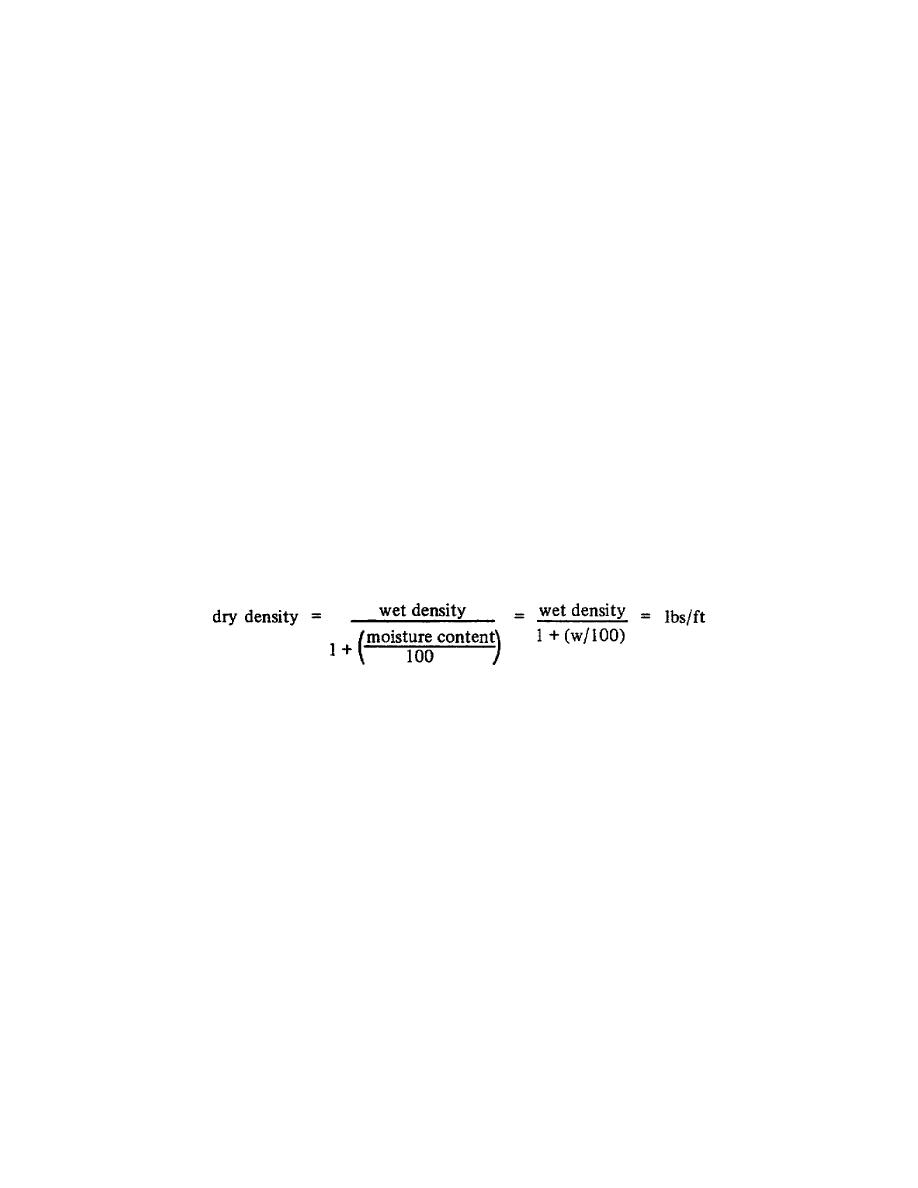
Lesson 4/Learning Event 3
The volume of the hole is computed by dividing the weight of sand in the hole by the calibrated density
or unit weight (line 6).
Density Determination
With the volume of the hole computed the remaining requirements are the moisture content and the dry
weights of the soil sample.
The container with the sample is oven-dried, air-cooled, and weighed. Record this weight on the reverse
side of the form, line 16. The difference (line 15 - line 16 = line 17) is the weight of water in the
sample. Subtracting the tare weight (line 18) from the dry soil and tare weight (line 16) results in the
weight of dry soil (line 19). Moisture content (line 10) is the weight of water (line 17) divided by the
dry weight (line 19) and expressed as a percentage.
If drying the entire sample and the container is not possible, an alternate but less desirable method may
be used. A specimen selected from the container is weighed and oven-dried. Using the weight of the
specimen and the entire sample, determine a percentage and translate the dry weight of the specimen to
get the dry weight of the entire sample.
Compare the wet density or unit weight (line 25) by dividing the wet soil weight (line 24) by 453.6 to
convert the grams to pounds, and then by the volume of the hole (line 14). The dry density or unit
weight is computed as follows:
The sand cone method is the preferred technique of the Army. However, there is a problem when time
is important because this method takes 25 minutes or more per test.
OTHER METHODS
There are numerous other methods for determining the density of the in-place soil. These include the
use of the water-balloon, oil, or paraffin coated box or cylinder specimens. These methods generally use
the identical principle of volume determination by the displacement of a known density material.
Therefore, it does not really matter what material is utilized as long as its density characteristics are
known or can be established.
The oil displacement method cannot be used on pervious soils which will absorb the oil quickly. Also,
residual oil spillage in a construction area will tend to soften asphaltic concrete placed in the area.
93


 Previous Page
Previous Page
